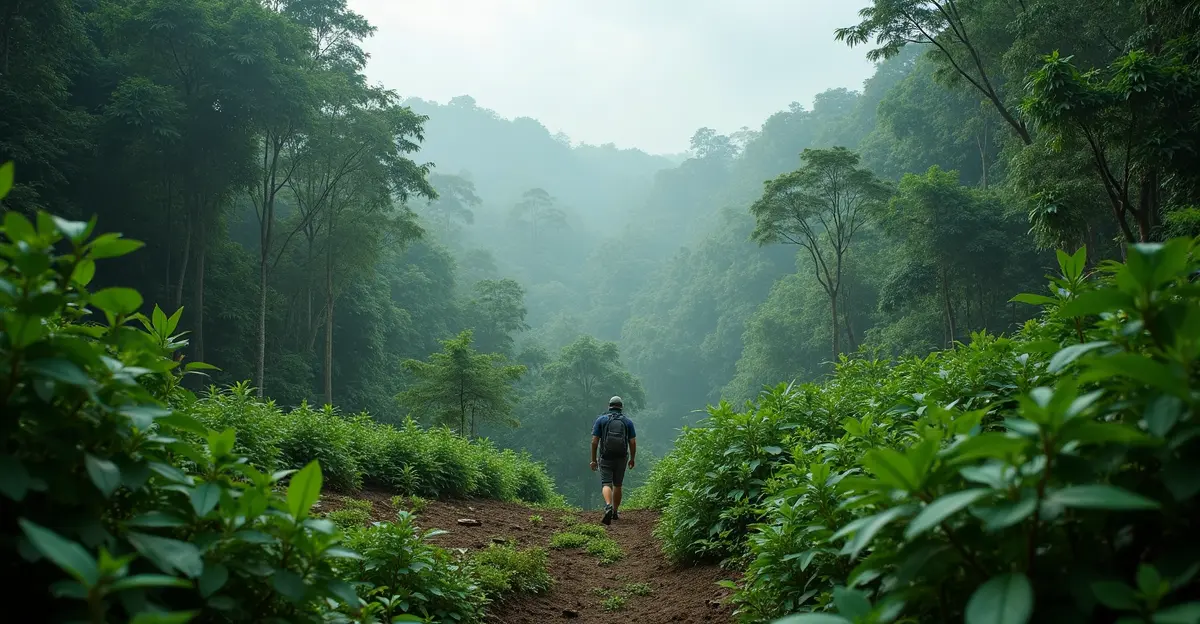Global biodiversity pact enters implementation with $200B annual funding for developing nations. Historic agreement aims to protect 30% of land/oceans by 2030 through expanded protected areas and comprehensive monitoring systems.

Historic Biodiversity Agreement Moves to Action Phase
After years of negotiations and a dramatic breakthrough in early 2025, the Kunming-Montreal Global Biodiversity Framework has officially entered its implementation phase, marking a critical turning point in global conservation efforts. The landmark agreement, adopted in December 2022, sets ambitious targets to halt and reverse biodiversity loss by 2030, including the protection of 30% of land and oceans worldwide.
Funding Breakthrough in Rome
The implementation phase gained crucial momentum during an extended session of COP16 held in Rome from February 25-27, 2025, where participating nations finally agreed on a comprehensive roadmap to provide developing countries with US$200 billion annually to finance conservation targets. This financial commitment represents one of the largest environmental funding packages in history and addresses a key sticking point that had threatened to derail the entire framework.
'This funding breakthrough represents our collective commitment to turning promises into action,' said David Cooper, interim executive secretary of the UN Convention on Biological Diversity. 'We now have the resources to match our ambitions for protecting Earth's precious biodiversity.'
Protected Area Expansion
Central to the implementation strategy is the rapid expansion of protected areas worldwide. Currently, only 17% of land territory and 10% of ocean territory enjoy protected status, far short of the 30% target set for 2030. The new funding will accelerate the establishment and management of protected areas, particularly in biodiversity-rich developing nations that host the majority of Earth's species.
'The 30x30 target is not just about drawing lines on maps - it's about creating effectively managed, well-funded conservation areas that actually protect biodiversity,' explained Maria Rodriguez, a conservation biologist at the World Wildlife Fund. 'This funding will make that possible in places where resources have been the main constraint.'
Monitoring and Accountability Framework
A sophisticated monitoring system has been established to track progress toward the framework's 23 targets. Each participating country is required to develop and implement National Biodiversity Strategies and Action Plans (NBSAPs), with regular reporting on their implementation progress. However, concerns remain about compliance, as only 25 of 195 countries had submitted their NBSAPs by the COP16 deadline in late 2024.
The monitoring framework includes satellite tracking of habitat changes, species population monitoring, and regular assessments of ecosystem health. 'We're building the most comprehensive biodiversity monitoring system ever created,' said Dr. James Chen of the UN Environment Programme. 'This will give us real-time data to course-correct and ensure we're meeting our targets.'
Implementation Challenges
Despite the funding breakthrough, significant challenges remain. Many developing countries lack the institutional capacity to effectively manage large conservation projects, and corruption remains a concern in some regions. Additionally, the framework must navigate complex land rights issues, particularly concerning Indigenous territories that overlap with proposed protected areas.
'The real test begins now,' noted environmental policy expert Sarah Johnson. 'Having money is one thing - spending it effectively and transparently is another. We need strong governance mechanisms to ensure these funds actually reach conservation efforts on the ground.'
Global Cooperation and Next Steps
The implementation phase represents an unprecedented level of international cooperation on biodiversity conservation. The framework brings together developed and developing nations, private sector actors, Indigenous communities, and civil society organizations in a coordinated effort to address the biodiversity crisis.
Countries are now racing to establish their implementation plans, with many expected to announce specific protected area designations and conservation programs throughout 2025. The success of this ambitious framework will depend on sustained political will, effective monitoring, and continued international cooperation in the coming years.
'This is our last best chance to save Earth's biodiversity,' concluded Cooper. 'The science is clear, the framework is in place, and now the funding is secured. There are no more excuses - we must deliver.'

 Nederlands
Nederlands
 English
English
 Deutsch
Deutsch
 Français
Français
 Español
Español
 Português
Português









